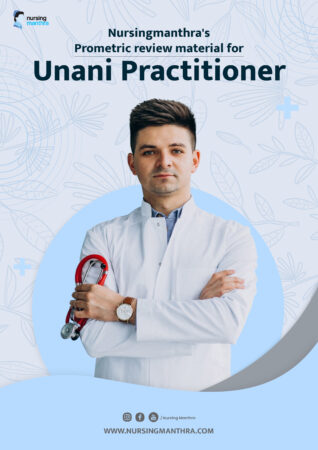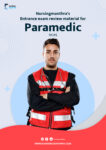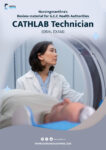- A 60-year-old patient with COPD presents with a respiratory rate of 28 breaths/min and an SpO2 of 88%. What is the most appropriate initial action?
A) Administer high-flow oxygen at 15 L/min
B) Initiate noninvasive positive pressure ventilation (NPPV)
C) Administer low-flow oxygen at 2 L/min via nasal cannula
D) Order a chest X-ray
Answer: C) Administer low-flow oxygen at 2 L/min via nasal cannula
Rationale: COPD patients are at risk of hypercapnic respiratory failure due to oxygen-induced hypoventilation. Low-flow oxygen (1–2 L/min) is recommended to maintain SpO2 between 88–92%, avoiding excessive oxygen delivery.
- A patient’s arterial blood gas (ABG) shows: pH 7.32, PaCO2 55 mmHg, HCO3 28 mEq/L, PaO2 70 mmHg. What is the acid-base status?
A) Compensated respiratory acidosis
B) Uncompensated metabolic alkalosis
C) Uncompensated respiratory acidosis
D) Compensated metabolic acidosis
Answer: A) Compensated respiratory acidosis
Rationale: The low pH (7.32) indicates acidosis, and the elevated PaCO2 (55 mmHg) suggests a respiratory cause. The slightly elevated HCO3 (28 mEq/L) indicates partial compensation by the kidneys, consistent with compensated respiratory acidosis.
- During a patient assessment, you note jugular vein distention and peripheral edema. What condition is most likely?
A) Left ventricular failure
B) Right ventricular failure
C) Pneumothorax
D) Pulmonary embolism
Answer: B) Right ventricular failure
Rationale: Jugular vein distention and peripheral edema are signs of right ventricular failure, often due to increased pulmonary vascular resistance, causing blood to back up into the systemic circulation.
- A 45-year-old patient reports shortness of breath and has a respiratory rate of 24 breaths/min. Pulse oximetry shows an SpO2 of 90%. What should you do first?
A) Administer a bronchodilator
B) Apply supplemental oxygen
C) Order an arterial blood gas
D) Perform a peak flow measurement
Answer: B) Apply supplemental oxygen
Rationale: An SpO2 of 90% indicates hypoxemia. The first step is to administer supplemental oxygen to improve oxygenation, typically targeting SpO2 of 94–98% in non-COPD patients.
- A patient with a history of asthma has a peak expiratory flow rate (PEFR) of 50% of predicted. What does this indicate?
A) Normal lung function
B) Mild asthma exacerbation
C) Severe asthma exacerbation
D) Chronic obstructive pulmonary disease
Answer: C) Severe asthma exacerbation
Rationale: A PEFR of 50% or less of predicted indicates a severe asthma exacerbation, requiring immediate intervention such as bronchodilators and possibly corticosteroids.
- A 70-year-old patient with pneumonia has a temperature of 38.5°C and a heart rate of 110 bpm. What is this heart rate classified as?
A) Bradycardia
B) Normal
C) Tachycardia
D) Arrhythmia
Answer: C) Tachycardia
Rationale: A heart rate above 100 bpm in adults is classified as tachycardia, often seen in response to fever, infection, or hypoxia, as in pneumonia.
- A patient’s chest X-ray shows a hyperlucent lung field and a deviated trachea to the right. What is the most likely diagnosis?
A) Left-sided pneumothorax
B) Right-sided pneumothorax
C) Pulmonary edema
D) Pleural effusion
Answer: B) Right-sided pneumothorax
Rationale: A hyperlucent lung field and tracheal deviation to the opposite side (right) suggest a right-sided pneumothorax, where air in the pleural space causes lung collapse and mediastinal shift.
- When assessing a patient, you note inspiratory stridor. What condition is most likely?
A) Asthma
B) Pneumonia
C) Upper airway obstruction
D) Pulmonary edema
Answer: C) Upper airway obstruction
Rationale: Inspiratory stridor is a high-pitched sound caused by narrowing of the upper airway, often due to obstruction (e.g., foreign body or edema).
- A patient’s ABG results are: pH 7.48, PaCO2 30 mmHg, HCO3 22 mEq/L, PaO2 85 mmHg. What is the acid-base status?
A) Uncompensated respiratory alkalosis
B) Compensated metabolic acidosis
C) Uncompensated metabolic alkalosis
D) Compensated respiratory alkalosis
Answer: A) Uncompensated respiratory alkalosis
Rationale: The high pH (7.48) and low PaCO2 (30 mmHg) indicate respiratory alkalosis due to hyperventilation. The normal HCO3 (22 mEq/L) shows no compensation, confirming uncompensated respiratory alkalosis.
- A 3-year-old child presents with a barking cough and inspiratory stridor. What is the most likely diagnosis?
A) Asthma
B) Croup
C) Pneumonia
D) Bronchiectasis
Answer: B) Croup
Rationale: A barking cough and inspiratory stridor in a young child are classic signs of croup, caused by viral inflammation of the upper airway.
If you would like access to more questions for the Respiratory Therapist Prometric Exam, you can purchase the complete study material using the link provided below. For any assistance or to request the material, please contact Nursing Manthra via WhatsApp.” +971502515717





















